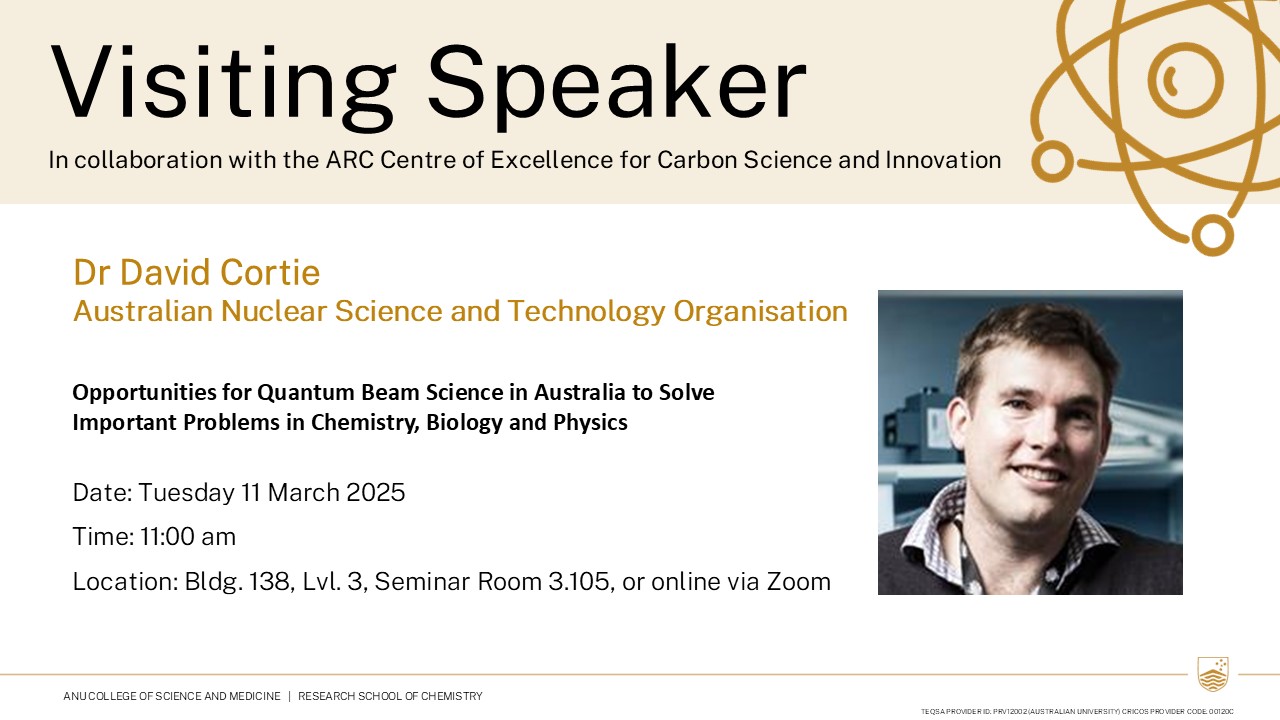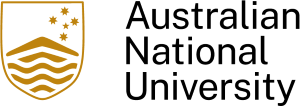Visiting Speaker - Dr David Cortie
Opportunities for Quantum Beam Science in Australia to Solve Important Problems in Chemistry, Biology and Physics
Speakers
Content navigation
Description

Opportunities for Quantum Beam Science in Australia to Solve Important Problems in Chemistry, Biology and Physics
This talk will introduce the field of quantum beam science, discussing how photons, matter waves, and spin-polarised particles, including muons, neutrons, and X-rays, can be used to image the quantum world and provide insights into materials. I will briefly overview the major pieces of infrastructure available to Australian researchers working in this area. I will then focus my primary technique, polarised neutron reflectometry which is available a ANSTO to study nanofilms, surfaces, superconductors, and lithographically patterned arrays. I’ll briefly discuss how this technique is implemented experimentally, and how data is analysed using analytical and numerical solutions to the 1D Schrödinger equation, Born Approximation and Distorted Born Wave Approximation. To illustrate how this translates to insights in chemistry, physics and biology, the talk will cover a series of five-minute scientific “vignettes” based on recent data from our beamline, showing how neutrons can be used to probe:
- The chemical and magnetic depth-profile of topological insulators in nanometer-thick films with an electronic phase-transition controlled with current-pulses or ion-beam irradiation [1]
- Superconducting interface effects in high temperature superconducting junctions [2]
- Nanometre-scale interfacial alloying in metallic films for spintronics [3]
- 3He/4He mixtures in dilution refrigerators / cryostats under operation [4]
- The COVID-19 spike protein binding to high-density lipoproteins [5]
- Hydrogen gas exposure and its effect on strongly correlated metal oxides [6]
References:
1) A. Bake, D.L Cortie et al. Nature Communications 14 (1), 1693 (2023)
2) H. Chou et al. Applied Surface Science 644, 158739 (2024); see also: Nature 329, 523–525 (1987)*
3) Y. Yang, D. L. Cortie, S. Granville et. al, , Phys. Rev. B 107, 94408, (2023)
4) C.R. Lawson et al, Scientific Reports 12, 1130 (2022) *
5) Y. Correa, A.P.Le Brun et al, J Colloid Interface Sci. 645, 627 (2023)
6) L. Guasco et al, Advanced Function Materials (2025), (in press) https://doi.org/10.1002/adfm.202419253
*Note: note from an Australian beamline but technically possible if desired
Biography
David Cortie is a physicist who specializes in applying nuclear techniques for advanced thin film characterisation and ion-beam modification. He is a senior instrument scientist at ANSTO, responsible for the polarised neutron reflectometry program. A multi-award-winning materials physicist, he has published over 100 papers in journals such as Physical Review Letters, Advanced Materials, Nature Communications, Physical Review B. He has worked as a post-doc and visiting scientist at the University of British Columbia (Canada), TRIUMF (Canada), Max-Planck (Germany), JPARC (Japan), Australian National University, Argonne National Lab (US) and FRMII (Germany).
Location
This seminar will be held in person in the Seminar Room, and via Zoom, details are provided below.
Zoom
Please click the link to join the meeting: https://anu.zoom.us/j/83847022733?pwd=DqRzx3cr9kWsWdkmkyJAMjDSn8tEXf.1
Meeting ID: 838 4702 2733
Passcode: 235863
Seminar Room
Bldg. 138, Lvl. 3, Seminar Room 3.105
